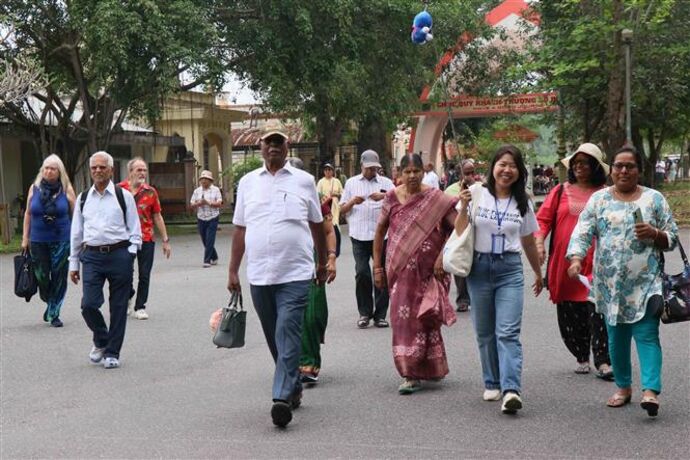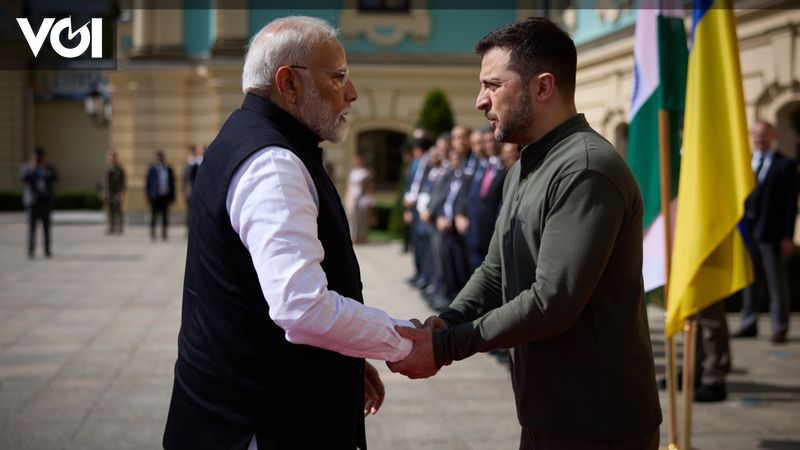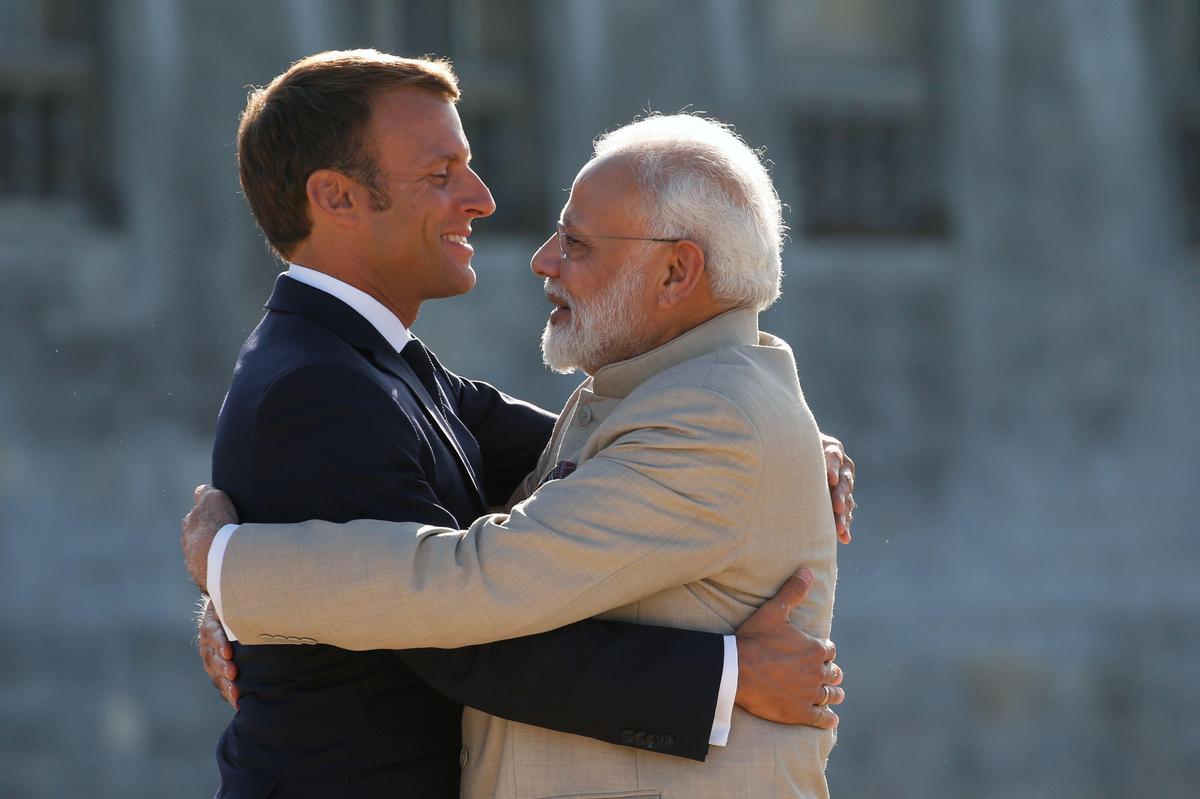India’s national anthem is “Jana Gana Mana” written by Nobel Laureate Rabindranath Tagore. The hymn is written in High Bengali Sanskrit and is taken from the first five stanzas of a Brahmo Hymn, composed and notated by Rabindranath Tagore himself. The national anthem was first sung on 27 December 1911 at the Calcutta session of the Indian National Congress and was officially accepted as the national anthem of India by the Constituent Assembly on 24 January 1950.
The national anthem is played for approximately fifty-two seconds. The original poem was translated into Hindi by Abid Ali and the original version of the Hindi song is slightly different. The Jana Gana Mana text, although written in Bengali, is heavily Sanskrit and written almost entirely using nouns that can also function as verbs. Almost all song names are used in all major Indian languages.
| On certain occasions, the Indian national anthem is played or sung. The correct interpretation of the national anthem, the occasion at which it is to be played or sung, and the importance of showing respect for the national anthem by behaving respectfully at this event have all been given guidelines. This information page contains the gist of this guide for your reading and reference. |
The composition consisting of the words and music of the first verse of the late poet Rabindra Nath Tagore’s song known as ‘Jana Gana Mana’ is the national anthem of India. It reads as follows:
Jana-gana-mana-adhinayaka jaya he
Bharata-bhagya-vidhata
Panjaba-Sindhu-Gujarata-Maratha
Dravidian-Utkala-Banga
Vindhya-Himachala-Yamuna-Ganges
uchchala-jaladhi-taranga
Tava Subha nom jage, tave subha asisa mage,
gahe tava jaya-gatha.
Jana-gana-mangala-dayaka jaya he
Bharata-bhagya-vidhata.
Victory he, Jaya he, Jaya him
jaya jaya jaya jaya he.
*The above version is the full version of the national anthem and the playing time is approximately 52 seconds.
An abbreviated version consisting of the first and last lines of the national anthem is also played on several occasions. It reads as follows:
Jana-gana-mana-adhinayaka jaya he
Bharata-bhagya-vidhata.
Victory he, Jaya he, Jaya him
Jaya Jaya Jaya Jaya Jaya he.
*The reading time of the short version is about 20 seconds.
English version :
You are master of everyone’s spirits,
giver of destiny India.
Your name awakens the hearts of Punjabis, Sindhs, Gujaratis and Marathas,
Dravidian, Orissa and Bengal;
It echoes in the hills of the Vindhyas and Himalayas,
mingled with the music of Yamuna and Ganga and sung by
Indian Ocean waves.
They pray for your blessings and sing your praises.
Everyone’s safety is in your hands,
You, giver of India’s destiny,
Victory, victory, victory to you.
Facts at a Glance – National Anthem of India1. The song Jana Gana Mana is the national anthem of India. It was composed by Rabindra Nath Tagore, originally in Bengali. 2. Adopted by the Constituent Assembly on 24 January 1950, in the Hindi version. 3. The song “Jana Gana Mana” was first published under the title “Bharat Vidhata” in Tattva Bodhini Patrika in January 1912. 4. The song was translated into English in 1919 as “Morning Song of India”. 5. First sung at the Kolkata Congress Session, 27 December 1911. 6. The national anthem tells us that India is a diverse nation and there are differences in culture, traditions, religion and language, but despite these differences, it reminds us that India is united under one flag. National anthems are important to unite people and remind us that there is no difference between Indians. |
indian independence day
| Indian Tofu’s photo |
Independence Day is India’s national holiday, and is celebrated every year on August 15th. In 1947, British rule in India ended, and that year is celebrated as Independence Day. The night of August 14-15, 1947 saw the division of the subcontinent into two countries: India and Pakistan. (14th August is Pakistan’s National Independence Day).
What happened on Independence Day?
The Prime Minister of India traditionally raises the Indian flag over the Delhi Red Fort, addresses the nation, and then a military parade takes place. The Indian president also delivered his annual “address to the nation” address. The incident was marked by the firing of 21 bullets from a cannon.
All government buildings in India including government offices, banks and post offices are closed today for a public holiday. All states and union territories of India celebrate Independence Day with flag-raising ceremonies, parades and cultural activities.
A month before Independence Day, the celebrations begin. Cultural events, competitions, debates, speeches and quizzes are commonplace in educational institutions.
Independence day background
The Sepoy rebellion in Meerut in 1857 marked the beginning of India’s struggle for independence, which accelerated after World War I. In the 20th century, the Indian National Congress (INC) and other political organizations led by Mahatma Gandhi launched national independence movements and revolutions against British rule repressive.
Several activists, nationalists and politicians, including Gandhi, were imprisoned by the colonial powers after the Indian Congress launched the Quit India campaign in 1942, demanding an end to British rule.
The partition of India in 1947 led to religious riots, many deaths and the forced displacement of an estimated 15 million people.

“Twitter junkie. Hipster-friendly bacon expert. Beer ninja. Reader. Communicator. Explorer. Passionate alcohol geek.”







